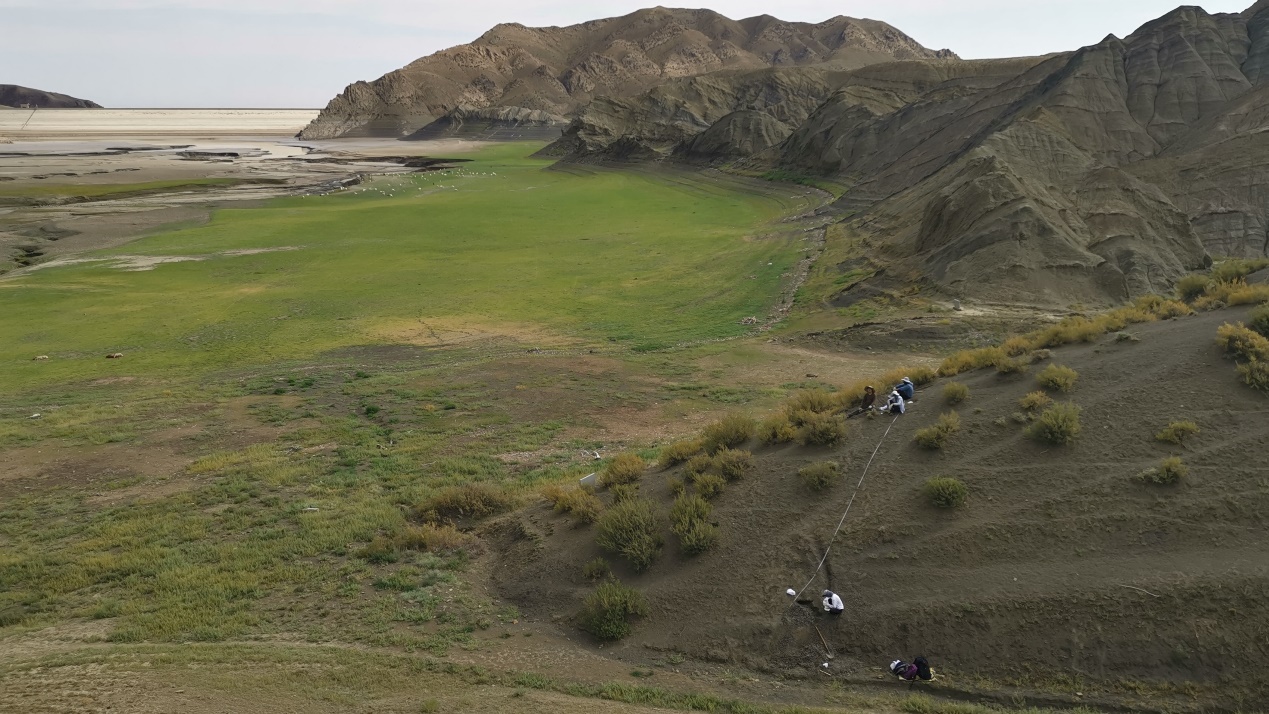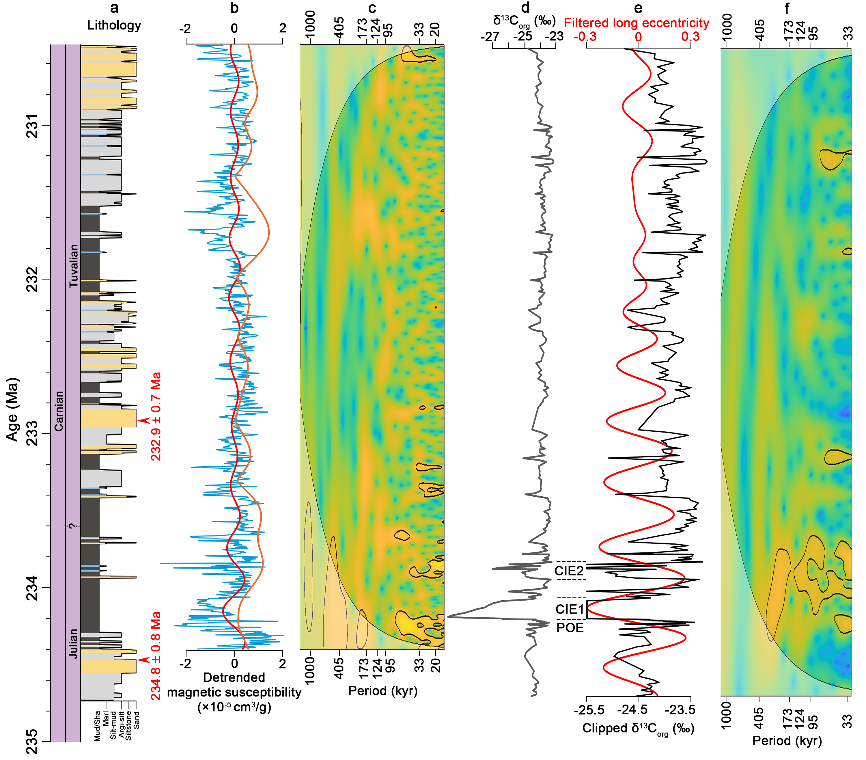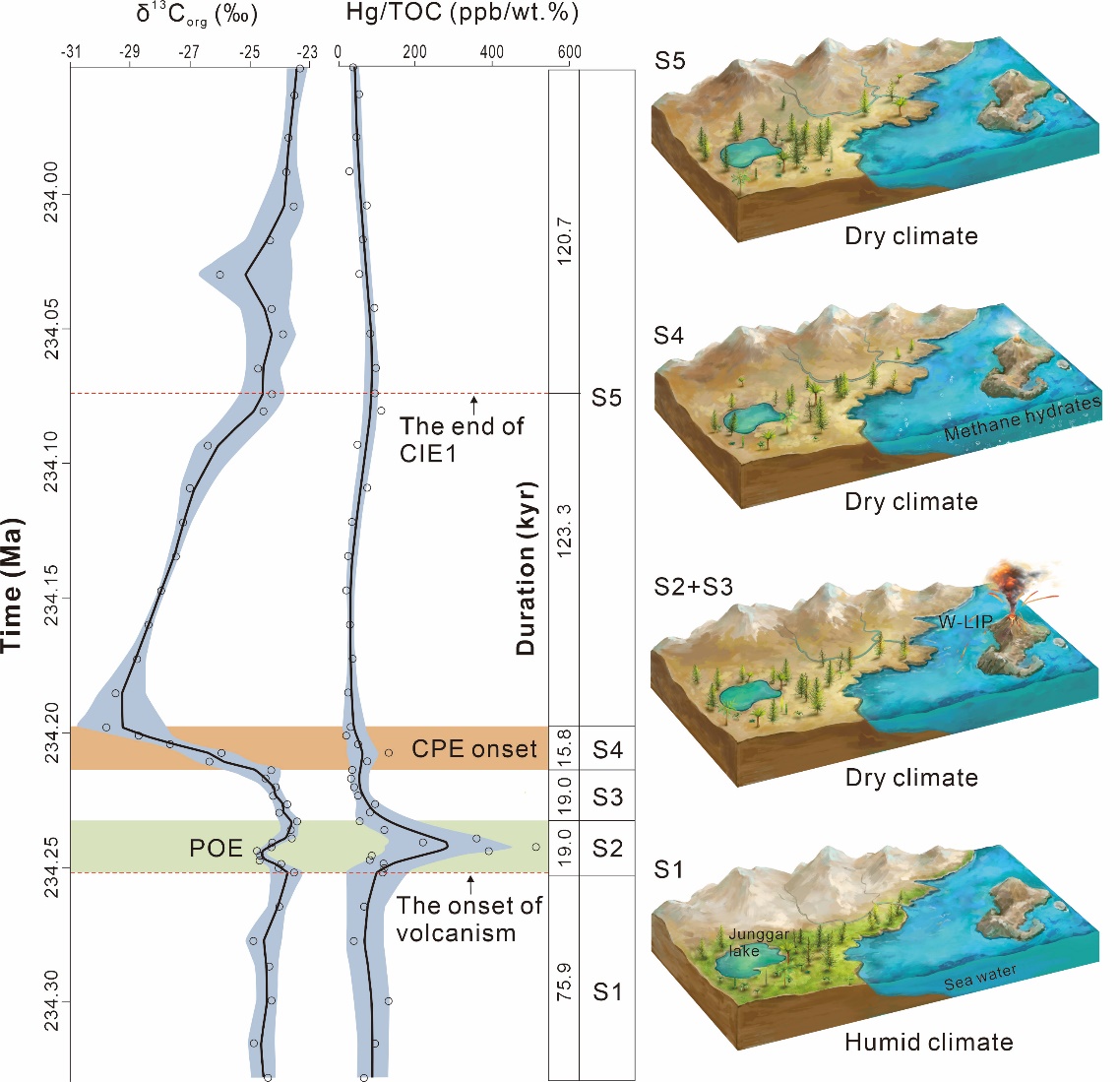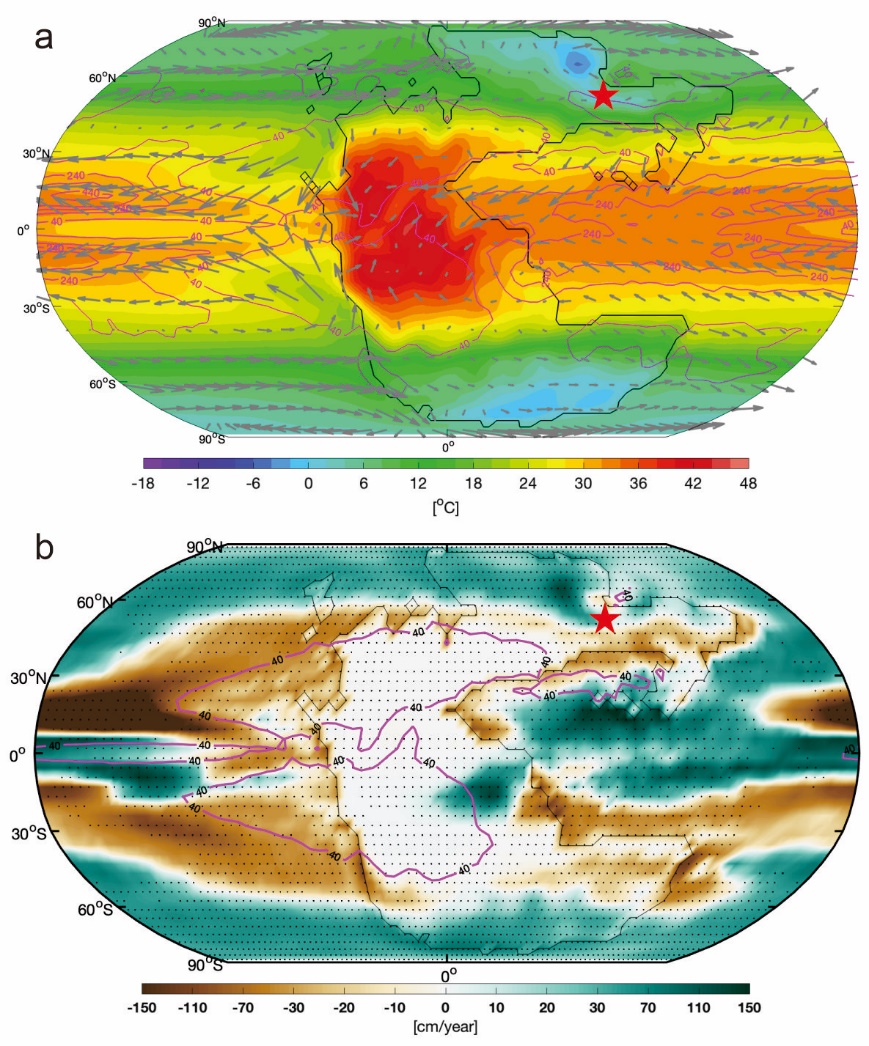The Mesozoic Era was marked by long-term greenhouse climates and repeated hyperthermal events—periods of rapid global warming—that profoundly affected life, ecosystems, and petroleum systems. The Carnian Pluvial Episode (CPE, ~234–232 Ma), is characterized by global warming, intensified hydrological cycling, increased continental weathering and erosion, and expanded marine anoxia. Popularized as a “million‑year global rain” (Marshall 2019, Nature), and often linked to dinosaur emergence, the CPE’s trigger mechanisms and climate feedback patterns have long remained controversial.
A multinational team led by Prof. Bo Wang from the Nanjing Institute of Geology and Palaeontology (CAS), with collaborators from the Institute of Vertebrate Paleontology and Paleoanthropology (CAS), Southern Marine Science and Engineering Guangdong Laboratory (Zhuhai), Institute of Geochemistry (CAS), Guangzhou Institute of Geochemistry (CAS), Vrije Universiteit Brussel, University of Oxford, University of Münster, Alfred Wegener Institute,reported a continuous lacustrine sequence (Dalongkou section) in the southern Junggar Basin, northwestern China. Using methods of stratigraphy, sedimentology, geochemistry, cyclostratigraphy and Earth system modeling, they systematically investigated the mechanistic origin of the CPE, climate–carbon feedbacks, and precipitation patterns. Their findings were published online on June 30, 2025 in Nature Communications.
1. Mechanistic origin of the CPE
High-resolution mercury (Hg) concentrations and isotopes reveal that approximately 38,000 years before the CPE onset, the Wrangellia Large Igneous Province (LIP) began releasing isotopically light carbon. This release corresponded with Hg anomalies and an abrupt but relatively weak negative δ13C shift (POE), coinciding with initial warming. As temperatures passed a threshold, heat-sensitive carbon reservoirs, such as sedimentary organic matter, permafrost, and especially marine methane hydrates were triggered. The sequence of events, including evidence for volcanic activity followed by a large CIE may support a scenario whereby the emplacement of the Wrangellia LIP prior to the CPE induced net positive climate–carbon-cycle feedbacks.
2. Climate–carbon-cycle interaction through the CPE
Their findings show that the CPE terrestrial carbon cycling, at a δ13Corg scale of ±1‰, displays an in-phase relationship with the 405-kyr long-eccentricity metronome, which appears similar to the warmhouse climate–carbon-cycle present throughout the Oligo–Miocene interval. This result, together with previous long-term carbon-isotope records, shows that such a climate–carbon-cycle interaction may have been widespread throughout the warm Mesozoic Era, including hyperthermal intervals. Therefore, this climate–carbon interaction may be the norm after the emergence of vascular plants, whereas the coldhouse climate–carbon-cycle dynamics of the earliest Pliocene may represent a more unusual situation.
3. The hydrological cycle during the CPE
Analysis of palynology and Earth system model simulations reveals thatprecipitation changes during the CPE exhibited spatial heterogeneity, accompanied by a poleward shift of pre-existing precipitation zones and no evidence for global humidification. The heterogeneous pattern of precipitation changes is characterised by predominantly increased precipitation near the Equator and at high latitudes, while subtropical latitudes exhibit diminished rainfall. In contrast to previous hypotheses regarding unusual global humidification during the CPE, the integrated stratigraphy and Earth system model highlight the spatial variations in global precipitation patterns, characterised by increased aridification in continental interiors and the emergence of multiple precipitation centres in low-latitude eastern continents and polar regions, including the Arctic, northeastern Tethys, northeastern Gondwana, and the Antarctic.
4. Implication for understanding past hyperthermal events
The CPE shares key features and perhaps driving mechanisms with several other hyperthermal events including the Triassic–Jurassic hyperthermal event, Cretaceous OAEs, as well as the Paleocene–Eocene Thermal Maximum. Moreover, during the hyperthermal events, different regions may have experienced periods of extreme drought or severe flooding, reflecting the contrasting extremes of climate. Thus, despite differences in nomenclature, these events share a fundamental nature as hyperthermal episodes. These similarities suggest that understanding their commonality might hold essential information on the nature of hyperthermal events and specifically which elements in the climate and carbon cycle contribute to these anomalously warm periods.
The research was supported by the National Natural Science Foundation of China and the Chinese Academy of Sciences.
Reference: Zhao Xiangdong, Xue Naihua, Yang Hu, Zheng Daran, Peng Jungang, Frieling J., De Vleeschouwer D., Fu Xuewu, Jia Wanglu, Fang Yanan, Li Sha, Wang Meng, Zhao Xianye, Wang Qiang, Zhang Haichun, Sha Jingeng, Jenkyns H.C., Claeys P., Wang Bo (2025) Climate–carbon-cycle interactions and spatial heterogeneity of the Late Triassic Carnian Pluvial Episode. Nature Communications, https://doi.org/10.1038/s41467-025-61262-7.

Fieldwork photo at the Dalongkou section, Xinjiang

The integrated stratigraphy calibrated to the astronomical time scale of the Huangshanjie Formation

Magnification of high-resolution data of the carbon-isotope excursions (CIEs) and model for the carbon cycle during the Carnian Pluvial Episode

Simulated climate states before and during the Carnian Pluvial Episode
Download:
